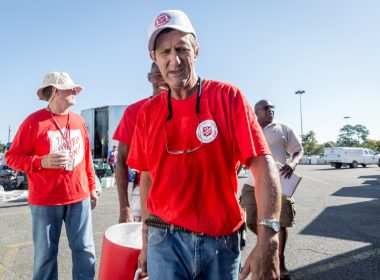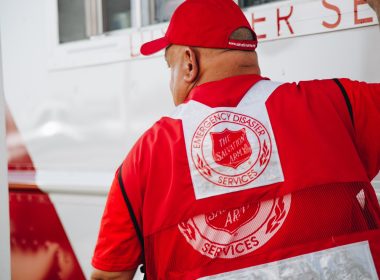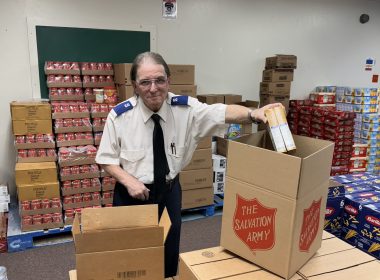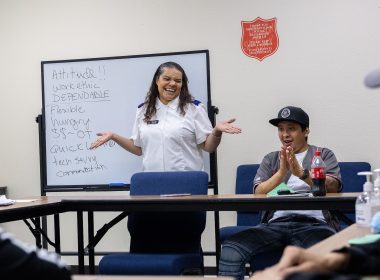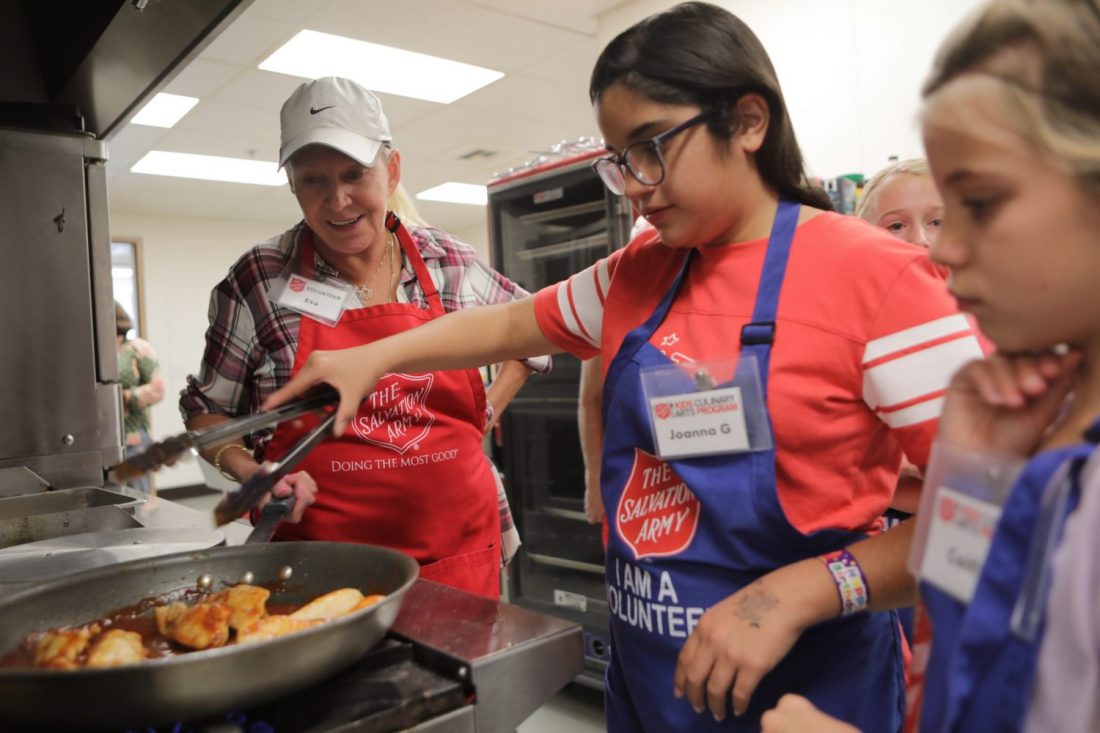 OVER 20 TONS of rice are prepared for delivery to victims of Typhoon Mitag. Assisting are Walden Weilbacher, and Captain Dave Harmon and Irma Abwe of the Guam Corps. |
BY SONDRA WHITE –
The Guam Corps delivered essential food and services to the victims of Typhoon Mitag, which struck the Western Pacific islands of Yap and Chuuk.
Winds of up to 75 mph whipped across the islands as the storm passed within 80 miles of Yap at its closest point of approach. Though about 70 people who lived on the shoreline of Yap proper were left homeless, major damages were caused by a massive tidal surge that soaked subsistence crops on the smaller outer islands. Some reports indicated that the ocean engulfed entire islands and atolls during the storm surge.
Captains Dave and Linda Harmon, corps officers, and CSM Wayne Gillespie, director of emergency disaster services for the Guam Corps, watched Typhoon Mitag closely as it passed across Micronesia. The storm missed Guam, but nailed both Yap and Chuuk State with heavy winds, high seas and destructive tidal surges.
The Salvation Army’s Chuuk Outpost, directed by Envoys Hermes and Rufina Otis, responded to typhoon damage on those islands with food assistance. Because there is no outpost on Yap, the Guam Corps sent its disaster response team.
Swift approval for disaster funding from the Western Territory and the generosity of a few local businesses enabled the Army’s quick response. Several businesses on Guam donated large quantities of food, most of which consisted of rice, potatoes and dried beans. The government of Yap asked that the Army try to approximate the local diet, which is mostly made up of taro, breadfruit, yams, bananas and coconut.
Matson Navigation Co. donated the use of two 40-foot containers for the food, and arranged to have them shipped to Yap in just two days, normally a six-day trip. Continental Airlines, which has a large 737 base on Guam, flew two tons of rice to Yap. “Without the generosity of Matson and Continental, and several food wholesale companies on Guam, our mission would not have been possible,” said Gillespie.
Accompanying Gillespie to Yap was his wife and Salvation Army volunteer Annie, and Celestine Ruwethin, a Yapese counselor who works at the Army’s Lighthouse Recovery Center on Guam.
The three languages of Yap State are Yapese, Ulithian and Woleaian, so Ruwethin’s translation skills and intimate knowledge of Yapese culture were invaluable to the team.
The disaster response team worked closely with the government of Yap to distribute the food and attend to those in need at three emergency shelters, particularly the elderly and those with disabilities. The team made an assessment of crop damage on Yap proper, helped some storm victims get proper medical treatment and began the process of rebuilding a damaged home.
“We distributed about 450 pounds of rice at the shelters,” said Gillespie. “The main island had lighter damages, and the majority of our aid shipment went to the outer islands, where the situation is quite grave. The crops lost were subsistence food crops the sole source of food for the outer islanders, other than what they take from the sea. When the saltwater drenches the soil, it burns the plants and quickly kills them. It could take between five to 10 years to re-grow some of those crops.”

